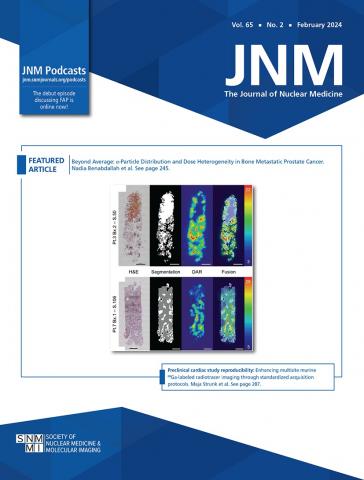并非所有的看门人都是Theranos。
IF 9.1
1区 医学
Q1 RADIOLOGY, NUCLEAR MEDICINE & MEDICAL IMAGING
Journal of Nuclear Medicine
Pub Date : 2023-10-01
Epub Date: 2023-06-29
DOI:10.2967/jnumed.123.266006
引用次数: 2
摘要
本文章由计算机程序翻译,如有差异,请以英文原文为准。
Not All Gatekeepers Are Theranostics.
TO THE EDITOR: Sometimes we need to challenge the views of colleagues and friends, especially when their thinking has the effect of muddying the waters rather than providing greater insight and clarity. I believe this to be the case with the opinion piece by Weber et al. in the May 2023 issue of the journal (1). The authors seek to redefine the term theranostic. They assert that this is any molecular imaging probe that provides actionable information for any subsequent therapeutic. This includes medical therapies, radiation therapy, surgery, or cell therapies. I believe that, in doing so, they are losing the very essence of what a theranostic is. I agree with the authors that the therapeutic component of a theranostic pair need not be a radionuclide therapy, but I contend that it mustbe the same(oravery similar)moleculeormoiety. It couldbecarrying a toxic therapeutic or it may be an antibody that targets a protein (e.g., amyloid in the brain), but it has to be the same targeting moiety. What the authors of this article are referring to as a theranostic imaging probe when used with a range of other therapies is more accurately described by the term gatekeeper or companion diagnostic. The imaging study validates the use of a certain therapeutic approach: this is not theranostics but simply a good use of medical imaging. The authors surely would not contend that a ventilation–perfusion lung scan demonstrating a pulmonary embolism that was subsequently treated with anticoagulation was a theranostic approach. Definitions are important and help us to describe and conceptualize the strategy chosen to diagnose and treat diseases. Seeking to dilute the definition of a theranostic in the way the authors have done will have the effect of confusing the basis of the concept and will be unhelpful. The theranostic approach is an extremely powerful one and should be amajor focus of future developments inmolecular imaging and therapy. We need to keep the concepts clear and appreciate the differences between gatekeeper and theranostic approaches. They are both very important, but they are not the same. Not all gatekeepers are theranostics.
求助全文
通过发布文献求助,成功后即可免费获取论文全文。
去求助
来源期刊

Journal of Nuclear Medicine
医学-核医学
CiteScore
13.00
自引率
8.60%
发文量
340
审稿时长
1 months
期刊介绍:
The Journal of Nuclear Medicine (JNM), self-published by the Society of Nuclear Medicine and Molecular Imaging (SNMMI), provides readers worldwide with clinical and basic science investigations, continuing education articles, reviews, employment opportunities, and updates on practice and research. In the 2022 Journal Citation Reports (released in June 2023), JNM ranked sixth in impact among 203 medical journals worldwide in the radiology, nuclear medicine, and medical imaging category.
 求助内容:
求助内容: 应助结果提醒方式:
应助结果提醒方式:


